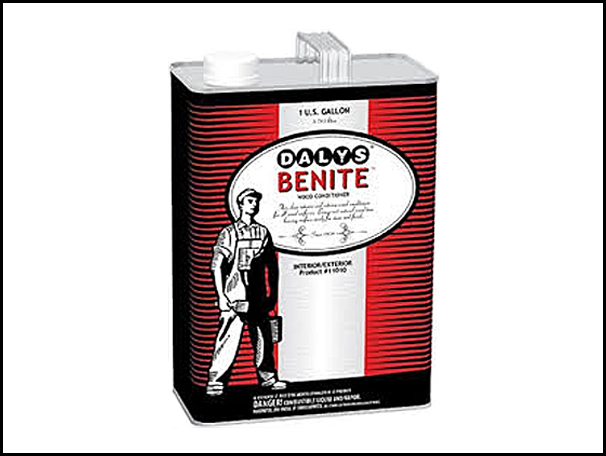
I was gifted a monkeypod end table that my mother-in-law kept in the basement that had endured years of kids/grandkids abuse. She acquired it probably in the early 50’s and it was finished with several coats of lacquer/shellac. I have stripped it and sanded to 400-grit and am ready to refinish. At this point, should I wipe it down with Benite first to seal the wood? Or not, since it had shellac before? Then, I am considering polyurethane finish for protection, but I love the way boiled linseed oil makes the grain pop. Your thoughts/suggestions please. – Jim Baertschiger
Tim Inman: “Benite” is a proprietary trade name for what is more than likely a diluted alkyd varnish product sold as a sealer/prep. The company provides no real information regarding the content of the product except to say that it is an alkyd (varnish). They claim it will not “chip, crack, chalk or peel” but that is pretty meaningless. Unless something is building a film on a surface thick enough to do any of those things, nothing will chip, crack, chalk or peel. So, “Benite” might be nice, but it isn’t anything magic.
Here is my suggestion: I love to use shellac as a prep/sealer. Dilute it out like crazy. I like something no stronger than 25% shellac and the remainder alcohol. I often use 10% shellac. All I’m after is a kiss of sealer and something to stall out the initial absorption factor in the wood. Shellac has other good attributes, too. This answer is more about your project than shellac, though. You like the looks of boiled linseed oil? Why not use it? Dilute some and rub it into the wood. Let it harden. Let it harden. Adding some cobalt drier to the oil mix before application will also encourage it to harden. Then, after letting it harden (get the hint?) scuff sand to condition the surface. Wipe down to remove all dust. Finish with your favorite poly for surface protection. Dilute the first coat for better, more controllable results.
Of course, you will have complete success since you tested each step on a sample board before you actually started in on your project, right? Axiom #2: Test. Test. Test.
Chris Marshall: I like to enhance the grain with boiled linseed oil, too, Jim. I’ll offer one addendum to Tim’s advice: if you start with boiled linseed oil, go with an oil-based poly for the topcoat. Even with the oil completely hardened in the wood, there’s still a chance that topcoating with a water-based poly could result in adhesion problems between the oil base coat and the poly. Why tempt fate? An oil-based poly will cure just fine over boiled linseed oil. Oil-based poly will take longer to dry than water-based, but there’s no risk of adhesion issues.





